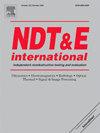碳纤维增强塑料超声相控阵数据分析的人机协同自动化策略
IF 4.1
2区 材料科学
Q1 MATERIALS SCIENCE, CHARACTERIZATION & TESTING
引用次数: 0
摘要
NDE 4.0代表了机器人技术,传感器技术和人工智能(AI)的最新进展的集成,根据工业4.0原则改造和自动化传统的NDE。尽管有了这些进步,NDE中的数据分析仍然主要是手动或使用传统的基于规则的工具(如信号阈值)进行的。这些工具通常难以有效地管理复杂的数据模式或高噪声水平,从而导致不可靠的缺陷检测。此外,它们需要经常手动调整以设置适合不同检查条件的适当参数,这在动态或快节奏的环境中可能效率低下且容易出错。相比之下,基于人工智能的分析工具已经证明了传统方法的改进,在缺陷检测方面提供了更高的准确性,并且在捕获的信号中具有更高的可变性。然而,由于与模型信任及其“黑箱”性质相关的挑战,它们在工业环境中的采用仍然有限。此外,很少讨论将AI工具实现到NDE工作流中的实用指南,这促使这项工作探索跨不同自动化级别的各种集成策略。研究人员探索了三个层次的自动化,从基本的人工智能辅助工作流程(工具提供建议)到高级应用程序(多个人工智能模型同时在综合分析中处理数据),将人类操作员转变为监督角色。通过对两种有缺陷的复杂几何形状碳纤维增强塑料部件的检查,对人工智能集成到NDE自动化工作流程中的拟议策略进行了评估,这两种部件通常用于航空航天和能源领域的安全关键结构,如飞机机身和风力涡轮机叶片。实验扫描使用安装在工业机械臂上的相控阵超声检测滚轮探头进行,密切复制工业实践,并通过结合振幅c扫描的监督对象检测,超声b扫描的无监督异常检测以及处理全体积超声数据的自监督AI模型,成功识别出36个制造缺陷。与单模型方法相比,这种包含多个AI模型的方法导致F1得分提高了17.2%。与人工检测不同,对于较大的组件,人工检测需要花费数小时,所提出的方法分别在94.03秒和57.01秒内完成两个被检测样本的分析。本文章由计算机程序翻译,如有差异,请以英文原文为准。
Human-machine collaborative automation strategies for ultrasonic phased array data analysis of carbon fibre reinforced plastics
NDE 4.0 represents the integration of recent advancements in robotics, sensor technology, and Artificial Intelligence (AI), transforming and automating traditional NDE in line with Industry 4.0 principles. Despite these advancements, data analysis in NDE is still largely performed manually or with traditional rule-based tools such as signal thresholding. These tools often struggle to effectively manage complex data patterns or high noise levels, leading to unreliable defect detection. Additionally, they require frequent manual adjustments to set appropriate parameters for varying inspection conditions, which can be inefficient and error-prone in dynamic or fast paced environments. In contrast, AI-based analysis tools have demonstrated improvements over traditional methods, offering greater accuracy in defect detection and adaptability to higher variability within captured signals. However, their adoption in industrial settings remains limited due to challenges associated with model trust and their “black box” nature. Additionally, practical guidelines for implementing AI tools into NDE workflow are rarely discussed, motivating this work to explore various integration strategies across different automation levels. Three levels of automation were explored, ranging from basic AI-assisted workflows, where tools provide suggestions, to advanced applications where multiple AI models simultaneously process data in a comprehensive analysis, shifting human operators to a supervisory role. Proposed strategies of AI integration into the NDE automation workflow were evaluated on inspection of two defective complex-geometry carbon fibre-reinforced plastics components, commonly used in aerospace and energy sectors for safety-critical structures such as aircraft fuselages and wind turbine blades. The experimental scans were conducted using a phased array ultrasonic testing roller probe mounted on an industrial manipulator, closely replicating industrial practices, and successfully identifying 36 manufactured defects through a combination of supervised object detection on amplitude C-scans, unsupervised anomaly detection on ultrasonic B-scans, and a self-supervised AI model for processing full volumetric ultrasonic data. This inclusion of multiple AI models led to an improvement of up to 17.2 % in the F1 score compared to single-model approaches. Unlike manual inspections, which take hours for larger components, the proposed approach completes the analysis in 94.03 and 57.01 s for the two inspected samples, respectively.
求助全文
通过发布文献求助,成功后即可免费获取论文全文。
去求助
来源期刊

Ndt & E International
工程技术-材料科学:表征与测试
CiteScore
7.20
自引率
9.50%
发文量
121
审稿时长
55 days
期刊介绍:
NDT&E international publishes peer-reviewed results of original research and development in all categories of the fields of nondestructive testing and evaluation including ultrasonics, electromagnetics, radiography, optical and thermal methods. In addition to traditional NDE topics, the emerging technology area of inspection of civil structures and materials is also emphasized. The journal publishes original papers on research and development of new inspection techniques and methods, as well as on novel and innovative applications of established methods. Papers on NDE sensors and their applications both for inspection and process control, as well as papers describing novel NDE systems for structural health monitoring and their performance in industrial settings are also considered. Other regular features include international news, new equipment and a calendar of forthcoming worldwide meetings. This journal is listed in Current Contents.
 求助内容:
求助内容: 应助结果提醒方式:
应助结果提醒方式:


